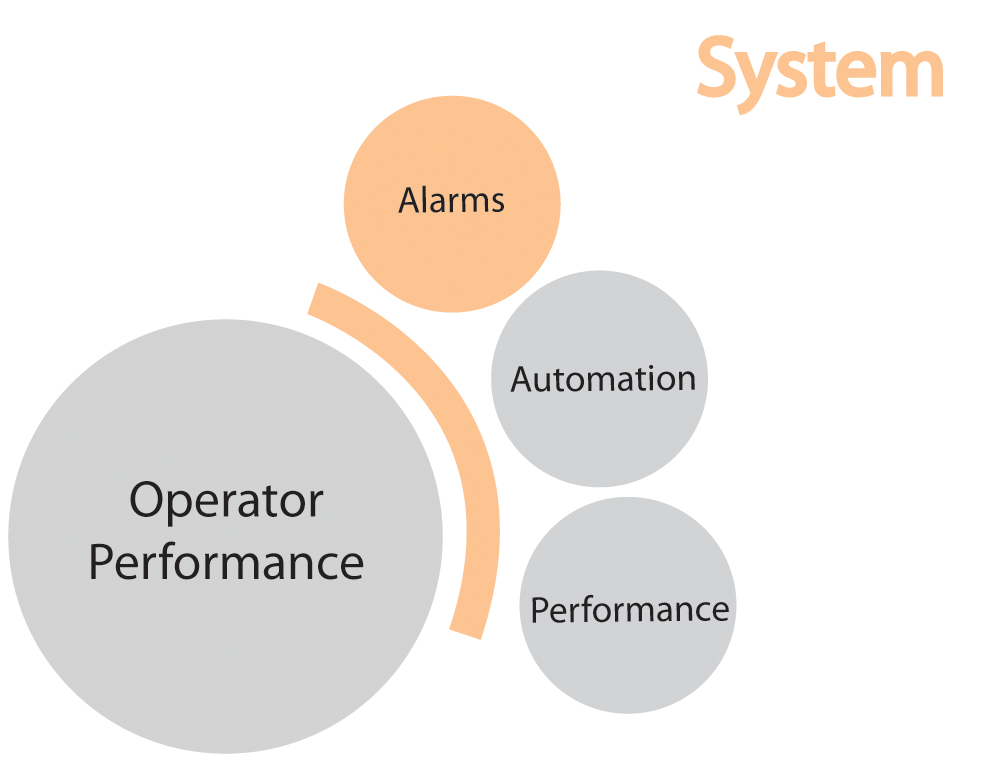Human Factors Topic: ALARMS
Why is the topic of alarms important?
The purpose of an alarm is to prompt an operator action, but poor alarm system design has been a contributing cause of upset severity in numerous plants worldwide.
The COP’s first work with alarms research was in 2008 with an experiment to evaluate the impact of alarm rates commissioned at Louisiana State University in response to recently published alarm guidelines and standards.
KEY QUESTIONS/ISSUES FACING INDUSTRY TODAY
- Can pattern recognition be used with alarm management?
- Are “system” or “common trouble” alarms a good idea?
- Can we define alarm metrics/alarm load for multiple operator consoles?
- What is the impact of “running by alarms?”
- What are the performance benefits of alarm rationalization?
- What options exist for alarm presentation other than list?
Do you have a question or hot button issue that isn’t on our list?
We’d like to hear from you so send us an email with your concerns and suggestions.
MORE INFORMATION
- Review the Completed Projects and Current Work of the Center on ways to enhance operator performance. Members can access project reports in the Members-Only Section.
- Alarm Management by the Numbers Deeper understanding of common alarm-system metrics can improve remedial actions and result in a safer plant
Author: Kim Van Camp
Publication: Chemical Engineering, March 2016, Access Article - The Keys to Operator Performance Operator Error Rates Double on the Ninth Day of Work After Eight Days of Consistent Performance
Recap of several interesting findings from ongoing COP projects with Penn State University, Louisiana State University, and Klein Associates
Author: Aaron Hand
Publication: Control Design, May 2012, Access Article - How to Build a Better Operator Collaborative Research Effort Looks for Keys to Improved Effectiveness
A summary of the Center for Operator Performance presentations at ABB Automation & Power World
Author: Aaron Hand
Publication: Control Design, April 2012, Access Article - How Many Alarms Can an Operator Handle? Two recent studies provide insights
Authors: David A. Strobhar, Beville Engineering, & Craig M. Harvey, Louisiana State University
Publication: Chemical Processing, December 2011, Access Article - Consortium Reports New Findings on Alarm Rates
New research funded by the Center for Operator Performance shows that process operators may perform better at high alarm rates when alarms are grouped by priority, rather than chronologically.
Author: Wes Iverson
Publication: Automation World, May 2010, Access Article - Control Systems, Oh, No…Not Again!
The Process Industries Have Been Faced with a Continuing Series of Refinery, Chemical Plant, Mining and Even Food Plant Disasters. These Continue to Happen with Distressing Regularity. Who’s at Fault? It’s the Culture, Not the Control Systems.
Author: Walt Boyes
Publication: ControlGlobal.com, April 2010, Access Article - Simple, Strong and Easy-to-Use
User-Centered Design Makes Operators More Aware of Their Processes and Better Able to Respond Fast.
Author: Jim Montague
Publication: ControlGlobal.com, March 2010, Access Article - Operators Get More Help
Efforts aim to provide insights and tools to boost performance.
Author: Seán Ottewell
Publication: Chemical Processing, January 2009, Access Article - Operator Performance as a Function of Alarm Rate and Interface Design
WBF Make2Profit Conference, Austin, TX, May 24-26, 2010
Presentation by David A Strobhar, PE, Glenn Uhack, and Craig Harvey, Ph.D., PE
Access Presentation (1.7MB PDF), Paper (60KB PDF) - Podcast Bytes: Impact of Alarm Rates and Interface Design on Operator Performance
In this podcast interview, recorded on April 16, 2010, Automation World Managing Editor Wes Iversen discusses the results with David Strobhar, chief human factors engineer at Beville Engineering, Dayton, and a member of the Center. - DCS Console Operator Issues in Related Industries
2011 TAPPI PEERS Conference, Portland OR, Oct 2-5 2011
Presentation by David A Strobhar, PE
Access Presentation (1.7MB PDF), Paper (20KB PDF) - Cognitive aids in process environments: prostheses or tools?
Author: James Reason
Publication: International Journal of Man-Machine Studies, Volume 27, Issues 5–6, 12 November 1987, Access Article - Best Practices in Alarm Management
(Digest No. 1998/279), IEE Colloquium on
Publication: IET CONFERENCE PUBLICATIONS, 1998, Access IEEE Digital Library - Alarming Performance
Authors: Bransby, M., & Jenkinson, J.
Publication: Computing & Control Engineering Journal, April 1998, Access IEEE Digital Library - Designing urgency into auditory warnings using pitch, speed and loudness
Authors: Haas, E. C., & Edworthy, J.
Publication: Computing & Control Engineering Journal, August 1996, Access IEEE Digital Library - A theoretical framework and quantitative architecture to assess team task complexity in dynamic environments
Authors: Ling Rothrock, Craig Harvey, & John Burns
Publication: Theoretical Issues in Ergonomics Science, Vol. 6, No. 2, March–April 2005, Access Article PDF

